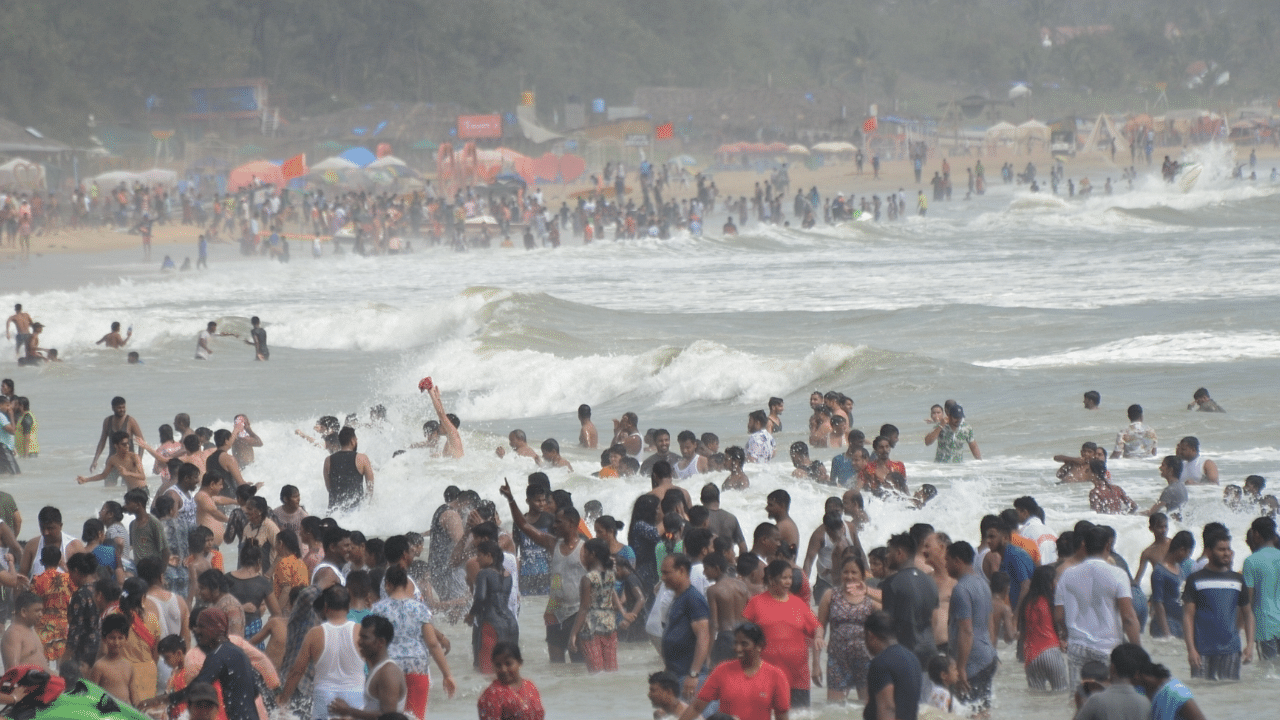
Amid unseasonal showers in Goa, the menace of tar balls has reappeared to plague the state’s picturesque beaches.
Drishti Marine, a private lifeguard agency in Goa, issued a social media advisory on Thursday, urging people not to walk barefoot on beaches of Baga and Calangute in North Goa district, and Bogmalo and Rajbag in South Goa district, where tar balls have surfaced over the last few days, coating the beach sand with the coarse oily slick.
US-based National Oceanic and Atmospheric Administration (NOAA) calls tar balls “little, dark-coloured pieces of oil that…are often remnants of oil spills but can also be produced from natural seeps, places where oil slowly escapes from the earth surface above some petroleum reservoirs.”
“Beach tar sighted across Baga, Calangute, Bogmalo to Rajbag. Please be careful when walking, especially if barefoot,” Drishti Marine announced on social media.
According to government records, as many as 33 beaches in Goa have been impacted by the regularly occurring phenomenon of floating tar balls—a product of oil weathered by heat and sea water.
NOAA explains that weathering happens when “various physical, chemical, and biological processes change the appearance of the oil.” The oil in question is usually part of a spill which is torn apart into smaller patches by winds and waves and scattered over a wider area. This is also the period when physical characteristics of crude oil (or a heavier refined product) changes as it floats on the ocean surface, states NOAA in its explanation of weathering.
Tar balls are formed due to a reaction of oil or oily ballast dumped by sea-going vessels, which then reacts with saline water. Tar balls regularly wash ashore along India’s western coastline causing pollution on beaches in south Maharashtra and even north Karnataka around the monsoons when the phenomenon peaks.
Earlier, the Goa state government had requested the National Institute of Oceanography (NIO) to conduct a study on the seasonal appearance of tar balls. The premier institute’s research had indicated that tar balls’ source could be linked to the Bombay High Oil refinery off the coast of Maharashtra. However, according to the chairman of the Goa State Pollution Control Board, the study was not definitive enough.
The inability of government agencies to deal with the menace of tar balls has been slammed by the state’s tourism industry stakeholders. They claim that tar balls repeatedly coating Goa’s beaches was not just an environmental hazard, but also had the potential to damage the state's tourism.
In 2019, before the pandemic, Goa saw nearly eight million tourists visiting the state to enjoy the state’s beaches and nightlife.